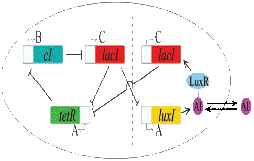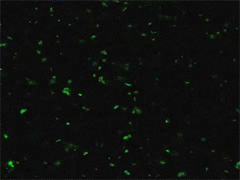McGill
From 2007.igem.org
(→In the Lab) |
(→The Team) |
||
| Line 46: | Line 46: | ||
== The Team == | == The Team == | ||
| - | [[McGill/Team Roster| Team | + | [[McGill/Team Roster| The Team]]<br> |
[[McGill/Mailing List|Mailing List]] | [[McGill/Mailing List|Mailing List]] | ||
|width=240px style="padding: 5px| | |width=240px style="padding: 5px| | ||
| + | |||
== Pictures == | == Pictures == | ||
[http://www.flickr.com/photos/cumbers/archives/date-posted/2007/08/21/ Brown University Meetup] (External) <br> | [http://www.flickr.com/photos/cumbers/archives/date-posted/2007/08/21/ Brown University Meetup] (External) <br> | ||
[[McGill/Team pics|Team Awesome Oscillators]]<br> | [[McGill/Team pics|Team Awesome Oscillators]]<br> | ||
|} | |} | ||
Revision as of 00:50, 14 October 2007
Project OverviewQuorum-sensing coupled with the Repressilator Our project is a continuation of one of the projects we presented last year: a two-gene oscillator, with an 'On' switch - LuxI gene, and an 'Off' switch - LacI, expressing a Cyan fluorescent protein when turned on for visualization. This simple relaxation oscillator makes a robust system of oscillations that can act as a 'pace maker' for more complicated oscillating systems. Quorum-sensing coupling between the systems is achieved with a diffusible artificial inducer (AI) protein made from LuxI which couples when produced, to a constitutively expressed gene in the system LuxR which can turn 'on' the system by promoting the synthesis of Lac from pLux. As Lac accumulates, it acts to turn 'off' the system by repressing the pLac controlling the synthesis of LuxI itself. Also, once AI is produced, it can easily diffuse to other cells and continue this 'On'-'Off' oscillator in other neighbouring cells, and hence increasing synchronization across a population of oscillating cells.
 
|
